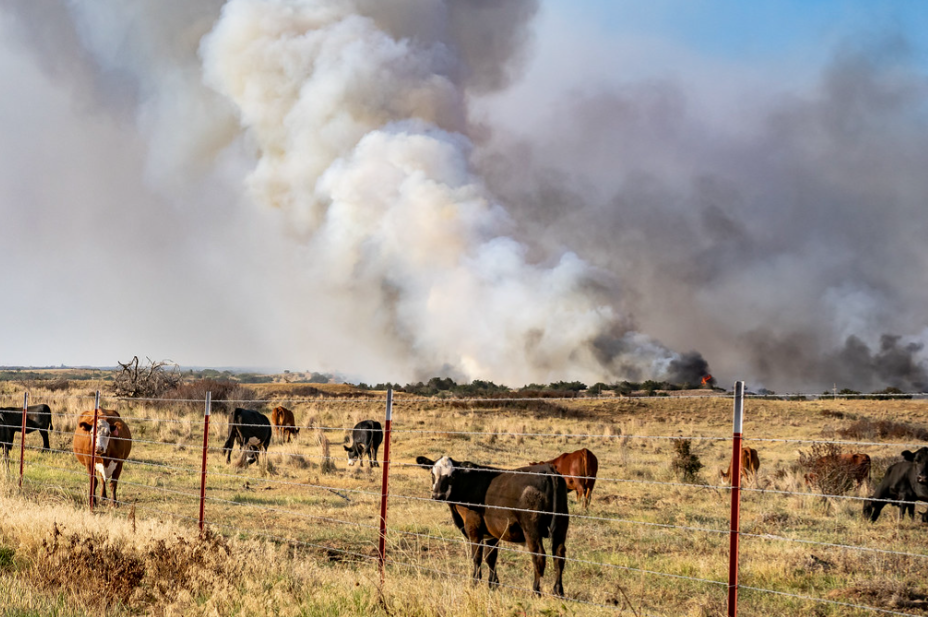
By Gail Ellis
This time of year, strong, spring winds whip across the prairie, and the smell of a grass fire may be detected in the air. John Weir, Oklahoma State University Extension fire ecology specialist, said March is the windiest month, driving wildfires in the dormant season before the brown, dead grass gives way to new spring growth.
In a recent segment of SUNUP, the agriculture television show of OSU Extension and Ag Research, Weir discussed how much of the state is still in a drought, and runaway grass fires are even more of a threat.
Wildfire precautions include:
- Developing and sharing a wildfire plan with everyone on the farm or ranch
- Clearing brush and debris from around homes, barns, pens and other structures
- Storing farm equipment and hay in an area where fire can’t reach it
- Identifying where livestock could be moved to in an emergency
“Just a little bit of prior planning will go a long way,” Weir said. “Trying to do it when a fire is actively burning is not a good time to plan or act on things.”
On the other hand, conducting prescribed fires and controlled burns:
- Increases gain on stocker cattle
- Increases the palatability of available forage
- Supports earlier grass green-up
- Increases nutrient quantity and quality
- Provides benefits for wildlife
Weir said the top reason people burn off their pastures and fields in Oklahoma is to control the eastern redcedar population and prevent other woody plants from invading rangelands.
“Even if you don’t have a lot of cedars on your property, it’s still a good thing to use fire to help keep them in check,” he said. “There’s no chemical or mechanical treatment that mimics what fire can do to the land.”
Prescribed fires and controlled burns
Prescribed fire is a burn that is planned with a specific objective and a specific piece of land. Planning is key.
“It’s not one of those things you wake up one morning and say, ‘Hey, it looks like a good day to burn,’” Weir said. “We need to have a plan, have fire breaks in place, notify neighbors and local fire departments, and make sure we have adequate equipment and manpower. The biggest thing that day is to make sure the weather conditions are proper and within prescription of what you want to do to help you achieve your goals and objectives for that burn.”
Those interested in assistance with prescribed fires and controlled burns should contact their local OSU Extension office or the Natural Resource Conservation Service. Extension educators and NRCS specialists can help landowners write plans for a burn and answer other questions. OSU Extension provides an online prescribed fire course, and the Oklahoma Prescribed Burn Association offers locations in 36 counties for training and support.
OSU Extension Fact Sheet Resources
Using Prescribed Fire in Oklahoma
Burn Plan for Prescribed Burning
Prescribed Fire: Understanding Liability, Laws and Risk
Firebreaks for Prescribed Burning
Prescribed Burning: Spotfires and Escapes
The Best Time of Year to Conduct Prescribed Burns
Smoke Management for Prescribed Burning
OSU Extension uses research-based information to help all Oklahomans solve local issues and concerns, promote leadership and manage resources wisely throughout the state’s 77 counties. Most information is available at little to no cost.


















